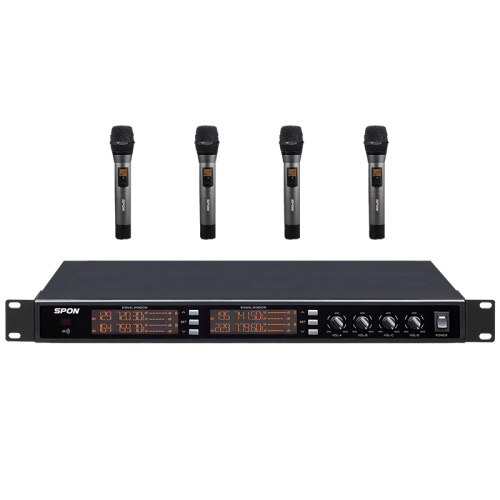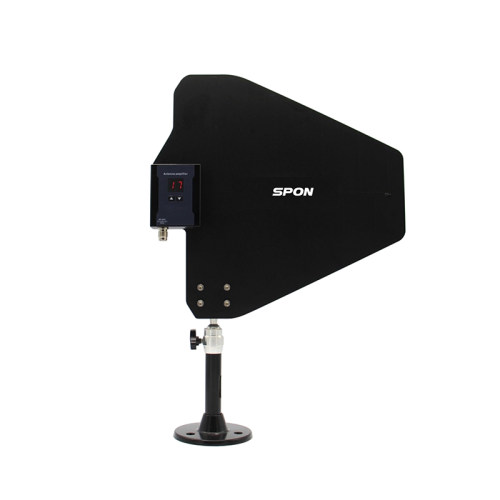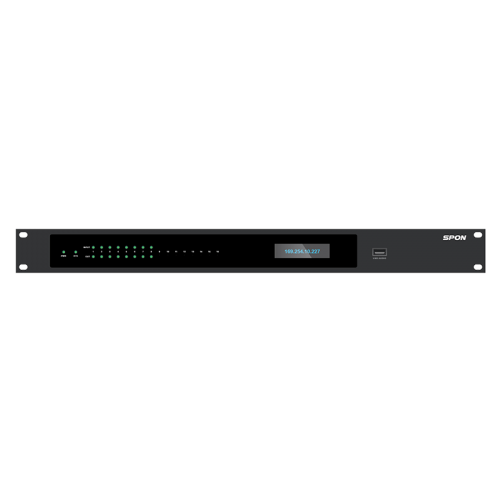Enhance Your News with a Top Quality IP Paging Microphone
Enhance Your News with a Top Quality IP Paging Microphone
Blog Article
Comprehensive Overview to Public Address Solutions
Public address (PA) systems are typically experienced in various projects such as office complex, property complicateds, industrial office complex, schools, health centers, train terminals, flight terminals, bus terminals, factories, and banks - IP PA System. This guide will certainly provide an in-depth summary of PA systems

Elements of a PA System
No matter the type of PA system, it usually is composed of four almosts all: source tools, signal boosting and handling tools, transmission lines, and speaker systems.
Source Devices
Music Players: Utilized for background music.
Microphones: Includes basic microphones and zone-select microphones.
Voice Storage Space Devices: For keeping business and emergency program messages.
Signal Handling and Amplification Equipment
Audio Signal Cpu: Takes care of audio signal payment, depletion, equalization, and so on.
Pre-Amplifier: Pre-amplifies audio signals.
Power Amplifier: Intensifies audio signals to drive audio speakers, providing constant voltage outcome.
Transmission Lines
The solution management system software permits the tracking facility to apply centralized governance over the broadcast and intercom interaction systems. It assists in online gadget standing tracking, mistake medical diagnosis, and troubleshooting, strengthening system reliability and consistency.
Speakers
Ceiling Speakers: Indoor, flush-mounted in the ceiling, continuous voltage or constant impedance.
Wall-Mounted Speakers: Wall-mounted, consistent voltage or consistent insusceptibility.
Column Audio Speakers: Free-standing, suitable for outdoor or indoor use.
Horn Speakers: High level of sensitivity, appropriate for outside or indoor use.
Camouflaged Audio speakers: For outdoor settings like parks or yards, created to look like mushrooms, stumps, or rocks.
Audio Technical Specifications of PA Solutions
In daily environments, typical sound pressure degrees are:.
• Workplace noise: 50-60 dB.
• Normal conversation: 65-70 dB.
• Textile manufacturing facility noise: 110-120 dB.
• Small caliber shooting: 130-140 dB.
• Big jet aircraft sound: 150-160 dB.
Signal-to-Noise Proportion (SNR)
SNR determines the ratio of the signal voltage to noise voltage, expressed in decibels. A greater SNR suggests less noise and better audio top quality. Normally, SNR must be at the very least 63 dB, with high-fidelity audio speakers reaching over 110 dB.
Input Sensitivity
This is the minimal input voltage required to attain the ranked outcome power. Greater sensitivity implies less input signal is needed. Normally, power amplifiers have an input level of sensitivity of 0.775 V (0 dB) to 1.5 V (+6 dB).
Maximum Result Power (Speakers)
The optimal power a speaker can handle in brief ruptureds without damage.
Rated Power (Speakers)
.
The constant power an audio speaker can handle without distortion, gauged in watts (W) Rated power is an ordinary value, and audio speakers can manage peak power approximately 2-3 times the ranked power.
Constant Voltage vs. Constant Resistance Outputs
Continuous Voltage (70V or 100V)
Makes use of voltage to drive speakers, enabling longer transmission distances and several audio speakers in parallel. Audio top quality is somewhat substandard contrasted to constant resistance systems.
Power amplifiers must match the voltage rating of the speakers to prevent damage.
Continuous Insusceptibility.
Makes use of current to drive speakers, giving better audio high quality yet minimal transmission distance (as much as 100 meters)
Resistance matching is essential; for instance, an 8Ω amplifier must be matched with 8Ω audio speakers.
Choose and Configuring Audio Speakers
Audio speaker Option
Indoor Spaces with Ceiling: Use flush-mounted ceiling speakers without a rear cover.
Indoor Spaces with Just a Structure: Usage ceiling audio speakers with rear covers or hanging ball-type audio speakers.
Outside Locations: Usage weatherproof column audio speakers or horn speakers.
Parks and Gardens: Usage camouflaged audio speakers developed for aesthetic objectives.
High-End Interiors: Use elegant dangling speakers.
Fire-Safe Areas: Use fire-resistant speakers with closed designs.
Audio speaker Arrangement
Audio speakers should be dispersed equally across the service location to make certain a signal-to-noise ratio of a minimum of 15 dB. Regular history noise levels and recommended audio speaker positioning are:.
High-end workplace passages: 48-52 dB.
Big mall: 58-63 dB.
Hectic street areas: 70-75 dB.
Speakers should be put to make sure a sound stress degree of 80-85 dB in many environments. Ceiling speakers must be spaced 5-8 meters apart, or 8-12 meters for background songs just. For emergency situation broadcasts, make certain that no area is greater than 15 meters from the nearby audio speaker.
Amplifier Sizing
Computation Technique:
For service and organization PA systems: P= K1 × K2 × ΣPo where:.
P = Complete amplifier output power (W)
K1 = Line loss settlement element.
K2 = Aging aspect (1.2-1.4)
ΣPo = Complete power demand.
For fire alarm systems, use 1.5 times the overall variety of speakers.
Instance Calculation:
For a history songs system with 10 speakers at 20W each: P= 1.26 × 1.2 × 10 × 20W × 0.7= 211W.
Last amplifier capability should be 1.3 times this worth: 211W × 1.3= 274W
Installation Needs
Speaker Placement
Audio speakers must be uniformly and strategically dispersed to satisfy insurance coverage and sound high quality demands
Power Supply
Little PA systems can use regular power outlets, while systems over 500W need a devoted power supply. Power must be secure, with automated voltage regulators if required. The power supply need to be 1.5-2 times the equipment's power intake
Wire and Channel Installation
Usage copper-core cords for signal transmission. Wires must be protected and transmitted via proper avenues, preventing interference from electric lines. Ensure correct separation between power and signal lines.
Lightning Security and Grounding
PA systems call for correct grounding to stop damage from lightning and electrical disturbance. Use committed basing for equipment and make certain all basing actions satisfy safety standards
Installation Quality
Cable Television and Adapter Top Quality
Usage high-quality wires and connectors. Ensure connections are protected and properly matched to avoid signal loss or interference.
Speaker Links
Preserve right stage placement in between speakers. Use trusted approaches for attaching cords, such as soldering or incurable blocks, and secure links from environmental damage.
Grounding and Safety Checks
Validate all grounding is properly set up and check the safety of power connections and devices settings. Carry out detailed examinations prior to finalizing the installment.
Examining and Change
Test the entire system to make certain all elements function correctly and meet layout requirements. Change settings as required for ideal efficiency.
Craftsmanship Needs for Public Address Systems
Construction Quality Needs
The quality of building in a public address (PA) system task is vital to fulfilling style specifications and customer requirements. As a result, it is necessary to strictly comply with the layout strategies, comply with requirements, stay clear of rework and delays, and keep detailed building and construction logs. Secret areas to concentrate on include:
Cord Selection and Installment
During the construction of a system, interest is frequently concentrated on tools, but the selection of transmission cables is likewise crucial for accomplishing satisfactory sound top quality. High-grade broadcasting equipment (amplifiers, speakers, etc) is needed, yet the quality of the transmission cable televisions likewise influences sound high quality.
Identical audio speaker wires have integral capacitance between the wires, which is not ideal for long-distance transmission as it can undermine high regularities and trigger vague or smothered high audios. Twisted pair cable televisions can effectively overcome this problem and needs to be utilized for long-distance transmission.
Protected twisted pair cords stop electro-magnetic interference and improve wire durability, making them suitable for long-distance installations. Thicker cords minimize transmission loss but boost expense and installation difficulty.
Use well balanced connections for all signal links between PA system gadgets, with soldered endpoints.
For systems with emergency alarm functions, use flame-retardant or fire-resistant copper-core wires.
Cable televisions need to be directed through steel channels or wire trays, and should not share trays with lighting or power lines. When splicing is necessary, utilize specialized adapters and leave sufficient wire length at both ends with clear permanent markings.

Attaching Speakers and Broadcast Lines
When connecting audio devices, it's essential to guarantee phase uniformity between audio speakers and broadcast lines. Phase disturbance between speakers can cause considerable variations in audio pressure levels, leading to uneven audio circulation. Adhere strictly to wiring tags and standard link approaches.
3 typical link techniques in PA systems are:.
Turning Approach: Removing insulation from wires, twisting them together, and securing them with tape or clamps. This method is simple but may deteriorate gradually.
Screw Terminal Approach: Removing insulation and placing cables into screw terminals, after that tightening up the screws. This approach is generally made use of.
Soldering Approach: Stripping insulation, turning cables, and soldering them together, after that covering with tape. This technique is much more suitable and trusted for high-demand or damp atmospheres.
Despite the method, use tinned wire to promote soldering and protect against rust. Usage PVC or steel conduit to shield exposed cords from junction boxes to audio speakers.
System Grounding
To lessen interference from the power system, different safety and operational groundings must be developed. Suggested practice is to set up different copper strips for weak and solid electrical systems in their corresponding vertical shafts.
The general grounding resistance must not exceed 1Ω.
Building and construction Evaluation
Due to the complexity of PA systems with countless connections and parts, comprehensive examination is necessary. General evaluations should consist of:
Safety and security checks of equipment setup.
Verification of power line setups (IP Paging Microphone).
Accuracy of terminations and connections
Special focus needs to be given to device setups, such as impedance matching turn on speakers. Verify that buttons are established appropriately IP PA System to avoid damages. Inspect the outcome selection switches on signal resource gadgets, setups on signal processing devices, amplifier linking buttons, and power supply setups.
As soon as these steps are confirmed, prepare for tools debugging. Because debugging approaches differ based upon details task requirements, they are not covered thoroughly below.
Quality Records
Certifications, technical specs, and paperwork for audio speakers, enclosures, transformers, controllers, electrical outlets, amplifiers, sound handling tools, secured cable televisions, and so on.
Pre-installation, surprise inspection, self-inspection, and common evaluation records.
Records of design adjustments and last illustrations - IP Speaker.
Quality evaluation and analysis records for avenue and cord installment
Records of PA system setup and debugging.
Significant Installment Requirements
Tools Installation Order
Area regularly utilized tools like the primary program controller at the top for easy access. For more facility systems with a 2.0-meter cabinet, setting regularly used equipment between 0.8 to 1.5 meters for convenience.
Equipment Link Order
The mixer outcomes are dispersed to each amplifier, and if using pure power amplifiers, connect to the INPUT audio input. Amplifier outputs after that attach to addressable terminals, zone control boxes, or zone selectors, and ultimately to the speakers.
Wiring Considerations
For considerable circuitry, separate audio and power lines utilizing various manufacturers' wires can aid avoid confusion. Strategy electrical wiring ahead of time to prevent missing out on cords, which would certainly require redesigning the entire installment.
Power Supply
Use a devoted power sequencer for PA systems to make certain uniform power monitoring and regular device startup sequences. The main power supply ought to consist of a ground line to protect equipment and avoid static-related hazards
Equipment Option
Do not rely exclusively on look; think about individual evaluations and market credibility. Products from trusted makers with considerable screening and experience are usually more trustworthy
Wireless Microphones
For cordless microphones, select UHF designs for better range and signal security. For mobile usage, favor headset microphones.
Connection Cables
Use strong links for longevity and prevent depending on adapters, which can create loose connections in time. Appropriately solder links to guarantee resilience and convenience of maintenance.
Closet Setup
If making use of deep power amplifiers, make certain the cabinet measurements (e.g., 600x600mm) are compatible with the tools. Action cupboard deepness and spacing before installation.
Appropriate preparation, top quality equipment, and careful installment and upkeep are vital to attaining optimal sound top quality and reputable efficiency in a system.

Audio speakers must be positioned to guarantee an audio pressure degree of 80-85 dB in many atmospheres. When attaching audio devices, it's critical to make sure phase uniformity in between speakers and broadcast lines. Phase interference in between speakers can cause substantial variations in sound pressure degrees, leading to uneven sound distribution. Amplifier outcomes then connect to addressable terminals, zone control boxes, or area selectors, and ultimately to the speakers.
Report this page